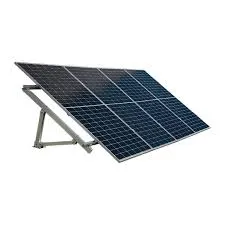Understanding the Functionality and Benefits of String Inverters in Solar Energy Systems
What Is a String Inverter in Solar Energy Systems?
As the world increasingly shifts towards renewable energy solutions, solar power has emerged as one of the most viable options for sustainable energy. In photovoltaic systems, various components work collaboratively to convert sunlight into electricity. One crucial component of many solar energy setups is the string inverter. This article will explore what string inverters are, how they function, and their advantages and disadvantages in solar energy systems.
Understanding String Inverters
A string inverter is a device that converts the direct current (DC) electricity generated by solar panels into alternating current (AC) electricity, which can be used by home appliances or fed back into the grid. The “string” in string inverter refers to a series of solar panels connected together in a sequence, known as a string. Typically, multiple strings can be connected to a single string inverter, allowing it to manage the combined output of the solar panels efficiently.
How String Inverters Work
When sunlight hits the solar panels, they generate DC electricity. The string inverter takes the electricity from the panels and converts it into AC electricity through a process called inversion. This conversion is essential, as most household appliances operate on AC electricity. The efficiency of the inverter plays a significant role in the overall performance of the solar energy system.
The string inverter operates optimally when all the panels in a string are performing similarly. For instance, if one panel in a string is shaded, malfunctioning, or dirty, it can reduce the overall output of the entire string. This is due to the string effect, which means that the weakest link will determine the performance of the entire series. Thus, maximizing the performance of each panel in the string is vital for efficient energy generation.
Advantages of String Inverters
1. Cost-Effectiveness String inverters are generally less expensive compared to other inverter types, such as microinverters. They offer a good balance of price and performance, especially in residential solar systems.
2. Simplicity The design and installation of string inverters are relatively straightforward. With fewer components to manage, they tend to be easier to set up and maintain.
what is a string inverter solar

3. Centralized Monitoring String inverters usually come with monitoring capabilities that allow users to track the performance of the entire string of panels, making it easier to identify any issues or inefficiencies.
4. Space Efficiency String inverters require less space compared to multiple microinverters, making them ideal for residential installations with limited space.
Disadvantages of String Inverters
1. Performance Issues Due to Shading As mentioned, shading on one panel can significantly impact the performance of the entire string, potentially leading to loss of energy production. This can be a considerable drawback in locations where trees or buildings may cast shadows on some panels at different times of the day.
2. Maximum Power Point Tracking (MPPT) String inverters usually utilize a single MPPT for the entire string. If the panels in a string encounter varying sunlight conditions, the inverter cannot individually optimize the performance of each panel, which can reduce overall efficiency.
3. Limited Flexibility Adding more solar panels or making adjustments to the existing setup can be more complicated with a string inverter, especially if it leads to mismatched strings or uneven load.
4. Centralized Failure Point If a string inverter fails, it can take down the entire solar energy system, unlike microinverters, where only a portion of the system may be affected.
Conclusion
String inverters play a vital role in many solar energy installations, offering a cost-effective and simplified solution for converting solar energy into usable electricity. While they have distinct advantages in terms of cost and space efficiency, potential downsides related to shading and flexibility must be carefully considered when designing a solar energy system. By understanding the function and implications of using string inverters, homeowners and businesses can make more informed decisions regarding their solar installations, contributing to a greener, more sustainable future.
-
Unlocking Energy Freedom with the Off Grid Solar InverterNewsJun.06,2025
-
Unlock More Solar Power with a High-Efficiency Bifacial Solar PanelNewsJun.06,2025
-
Power Your Future with High-Efficiency Monocrystalline Solar PanelsNewsJun.06,2025
-
Next-Gen Solar Power Starts with Micro Solar InvertersNewsJun.06,2025
-
Harnessing Peak Efficiency with the On Grid Solar InverterNewsJun.06,2025
-
Discover Unmatched Efficiency with the Latest String Solar InverterNewsJun.06,2025







